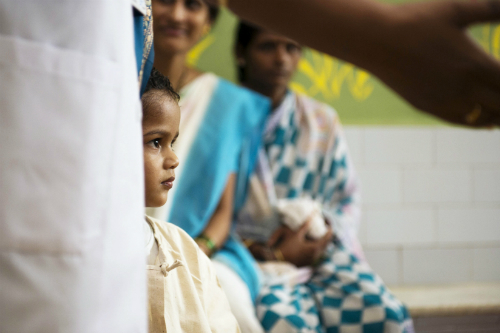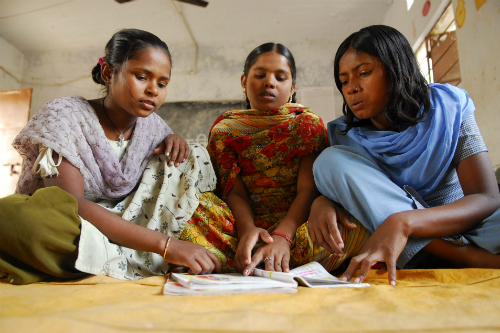News
Investing in girls: Cash incentives help promote gender equality in India
- 29 April 2016
News
PUNJAB, India – “I am getting financial support for my education from the government, whereas my brother, who is studying in the same school as me, is not eligible for that,” says Guneet*, an adolescent girl currently enrolled in seventh standard at a government school in Punjab, India, near the Pakistani border. “As a result, my parents are very happy, and they want to educate me as much as I like.”
Guneet, and at least a million other girls like her throughout India, are receiving this support for their education through various state and national government schemes seeking to reduce the damaging impact of cultural preference for sons by offering families cash incentives to invest in daughters.
Through the schemes, participating families receive payments each time their daughter achieves one of several milestones, from registering her birth, immunizing her, enrolling her in school and keeping her there to ensuring she remains unmarried until the age of 18.
However, while an increasing number of regions in India have started offering these incentives over the last decade, little has been known about their impact on the ground.
Now, a new UNFPA study seeking to shed light on the programmes’ effects has shown that these schemes may be helping to reduce discrimination against girls and to gradually shift cultural attitudes about the value of investing in their futures.

In India, and around the world, son preference takes many forms. It can cause families to divert limited resources to boys and neglect girls and to marry their daughters off at a young age. In India, 47 per cent of girls marry before age 18 – and child brides are much less likely to be in school and much more likely to be victims of sexual and gender-based violence than other women and girls.
A cultural preference for sons also results in pre-natal sex selection and higher mortality of girls due to neglect – two tragic but all-too common occurrences that have contributed to 117 million women who should be alive today missing in Asia alone.
The majority of these missing women and girls are found in India and China, but large imbalances are common throughout Asia and in Eastern European and Caucasus countries, and occur globally.
In India, 110 boys are born for every 100 girls, and in some areas of the country the imbalance is much higher. For example, in Punjab, where Guneet lives, 115 males are born for every 100 females.
And in areas with highly imbalanced sex ratios, a growing number of men who would like to get married cannot find brides, a phenomenon that anecdotal evidence has linked to increased sexual violence and forced trafficking of girls across borders.
A key factor in reducing gender-biased sex selection is increasing the social and economic value of girls and empowering them to stay in school, get jobs and contribute to their families and communities.
“Financial incentives play a complementary role in enhancing the value of girls in an otherwise discriminatory social environment,” says Diego Palacios, UNFPA’s representative in India. “They encourage parents to invest in the health and education of daughters, and they move us on the path to recognizing girls as valuable members of their families.”
Data from the new UNFPA study, undertaken in collaboration with the International Institute of Populations Studies in Mumbai, demonstrate that the cash incentive schemes have indeed caused parents to view their daughters as “less of a burden” and increased their willingness to delay the girls’ marriage and keep them enrolled in school.

In addition, 27 per cent of parents who had enrolled their daughter(s) in the scheme believed that girls can decide for themselves when to marry, compared to 16 per cent among nonparticipating parents with daughters. And at 23 per cent, participating parents were almost twice as likely to strongly agree with seven statements about gender equality, such as “girls should be given the same nutritious food as boys,” “girls should receive the same amount of education as boys” and “girls should be given an equal share in property.”
However, despite this positive shift, the high percentage of parents who didn’t agree reflects that there is still a long way to go towards ending the impact of son preference. The study suggests that while financial incentives may help transform girls’ futures by reducing discrimination during critical life stages, broader, sustained equality will require additional interventions.
But investing in a girl today is a critical step towards recognizing her value and to further change tomorrow.
“By empowering girls today, we can unleash their power and potential. Imagine the difference one girl can make,” says UNFPA Executive Director, Dr. Babatunde Osotimehin. “Educated, healthy and skilled, she will be an active citizen in her community. She will be able to contribute fully to her society and help break the cycle of poverty.”
* Name changed to protect privacy.